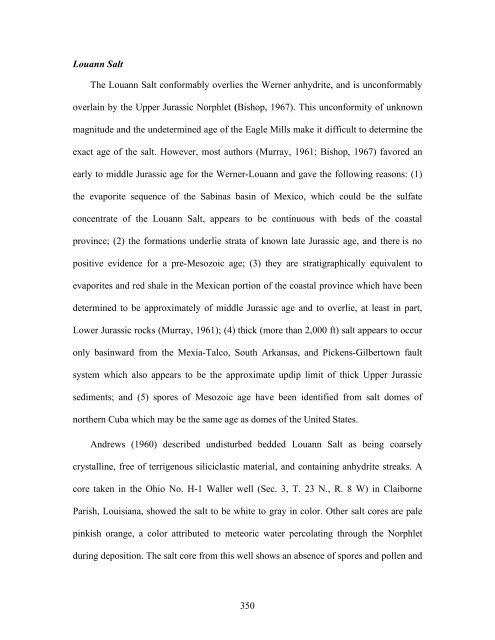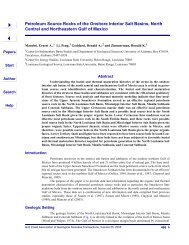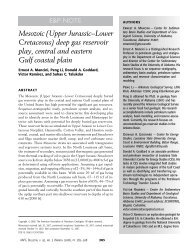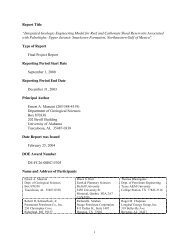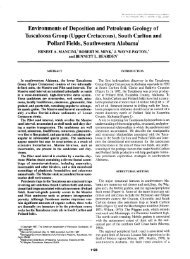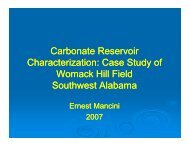Part 4 - Berg - Hughes Center
Part 4 - Berg - Hughes Center
Part 4 - Berg - Hughes Center
Create successful ePaper yourself
Turn your PDF publications into a flip-book with our unique Google optimized e-Paper software.
Louann Salt<br />
The Louann Salt conformably overlies the Werner anhydrite, and is unconformably<br />
overlain by the Upper Jurassic Norphlet (Bishop, 1967). This unconformity of unknown<br />
magnitude and the undetermined age of the Eagle Mills make it difficult to determine the<br />
exact age of the salt. However, most authors (Murray, 1961; Bishop, 1967) favored an<br />
early to middle Jurassic age for the Werner-Louann and gave the following reasons: (1)<br />
the evaporite sequence of the Sabinas basin of Mexico, which could be the sulfate<br />
concentrate of the Louann Salt, appears to be continuous with beds of the coastal<br />
province; (2) the formations underlie strata of known late Jurassic age, and there is no<br />
positive evidence for a pre-Mesozoic age; (3) they are stratigraphically equivalent to<br />
evaporites and red shale in the Mexican portion of the coastal province which have been<br />
determined to be approximately of middle Jurassic age and to overlie, at least in part,<br />
Lower Jurassic rocks (Murray, 1961); (4) thick (more than 2,000 ft) salt appears to occur<br />
only basinward from the Mexia-Talco, South Arkansas, and Pickens-Gilbertown fault<br />
system which also appears to be the approximate updip limit of thick Upper Jurassic<br />
sediments; and (5) spores of Mesozoic age have been identified from salt domes of<br />
northern Cuba which may be the same age as domes of the United States.<br />
Andrews (1960) described undisturbed bedded Louann Salt as being coarsely<br />
crystalline, free of terrigenous siliciclastic material, and containing anhydrite streaks. A<br />
core taken in the Ohio No. H-1 Waller well (Sec. 3, T. 23 N., R. 8 W) in Claiborne<br />
Parish, Louisiana, showed the salt to be white to gray in color. Other salt cores are pale<br />
pinkish orange, a color attributed to meteoric water percolating through the Norphlet<br />
during deposition. The salt core from this well shows an absence of spores and pollen and<br />
350


